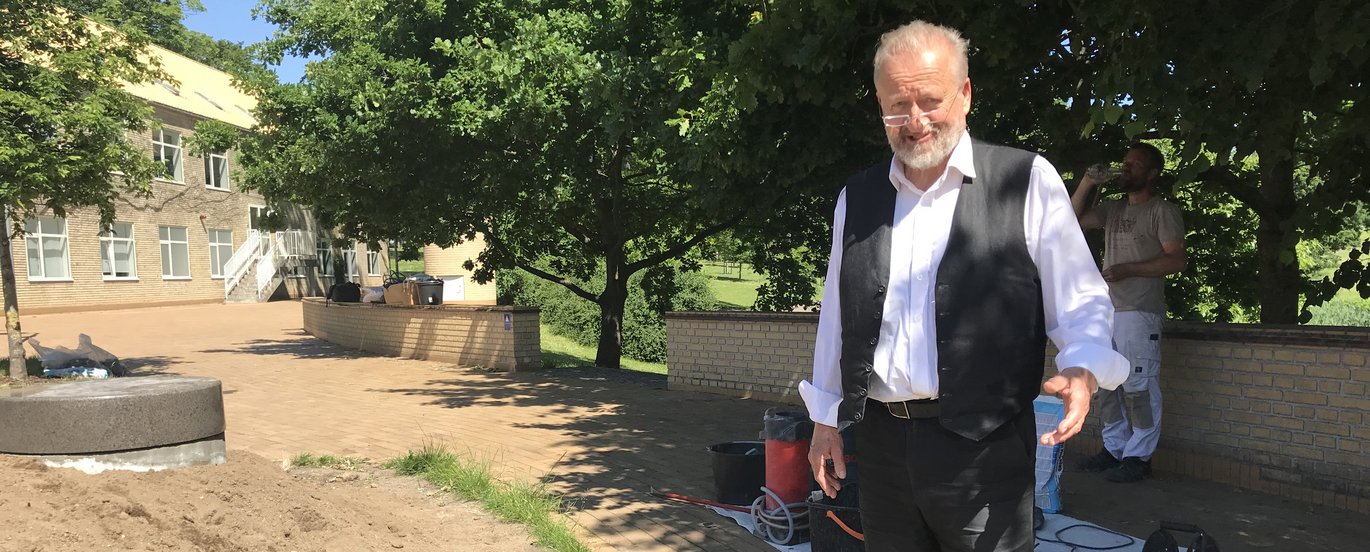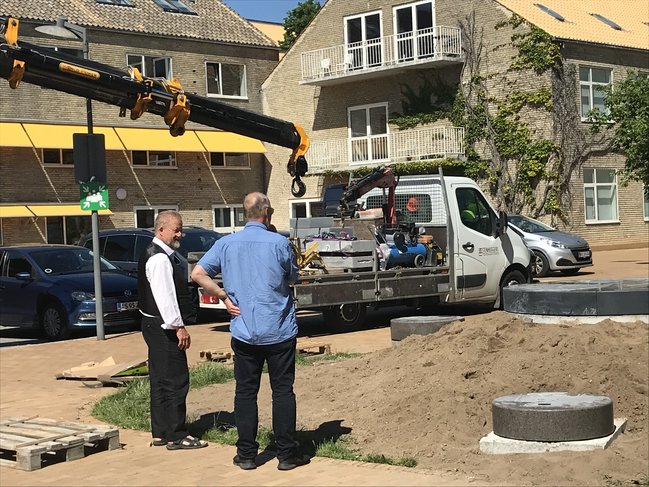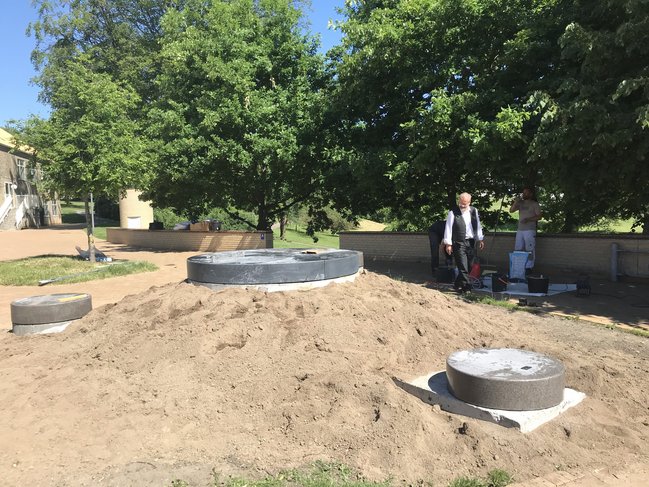Foundation laid for a new Bjørn Nørgaard sculpture in the University Park
On Tuesday, sculptor Bjørn Nørgaard checked out the foundation that will bear his sculpture ’Ars – Scientia – Iustitia’. The sculpture itself, which will be erected in August, is a reminder that independent art, research and law are a necessary counterweight to and critique of all power structures.

Update 20 August 2020: Bjørn Nørgaard’s sculpture was supposed to be unveiled on 24 August, but the event is postponed due to the corona situation in Aarhus.
“It’s almost a shame that we’re not unveiling the sculpture today,” sculptor Bjørn Nørgaard remarked under clear blue skies in the University Park, when he stopped by to inspect the foundation for his sculpture 'Ars – Scientia – Iustitia' earlier this week. The sculpture will be installed on the square between AIAS and International Centre in August.
And it’s a good thing the foundation is robust – this is no figurine. Nørgaard’s bronze sculpture is over six metres tall and weighs over a tonne. To support it, steel pillars 6-7 metres long are buried under the foundation to makes sure the piece doesn’t collapse under its own weight.

Sculptor Bjørn Nørgaard with Finn Villadsen, an engineer with AU Finance and Estates Projects and Development. Bjørn Nørgaard was satisfied with the foundation, and the two men tossed around ideas about lighting the work and installing a stairway leading up to it.
“I envision people sitting here, leaning on the sculpture, having a beer. It’s both for looking at and sitting on”, Nørgaard told me.
The necessary critique of power
The sculpture, a gift from the New Carlsberg Foundation, symbolises the Tower of Babel surrounded by three allegorical figures representing art, science and the law.
“The sculpture refers to a quotation from H.C. Ørsted – whose 200th birthday is this year, you know – where he describes the Enlightenment ideal that society rests on three pillars: art, science and law.”
But the sculpture isn’t just a tribute to the three pillars that ensure that society’s power structures – including political power structures – never go unquestioned and unchallenged. It’s also a reminder to defend them. Because according to Nørgaard, there are plenty of examples of threats to the independence of art, science and the judiciary in our day and age.

One example he mentioned was the increased government involvement in who gets the top jobs at cultural and research institutions.
“At the universities, we’re also seeing more government control of research,which is driven by the ‘competition state’, among other factors. And in connection with legal verdicts that attract the attention of politicians, you’ll see them try to change rules and laws afterwards. These are all forms of interference with the fundamental institutions democracy is built on.”
The ‘Artis’ pillar, which symbolises art, will face the grass and trees of the park. Fittingly, the ’Scientis’ pillar will face the university’s buildings, while the ‘Justitia’ pillar will face the city. And the Tower of Babel, a symbol of utopia, will reach for the sky in their midst.
Attended lectures at AIAS
While working on the sculpture, he attended lectures at AIAS, Nørgaard told me.
“It’s an exciting place where international interdisciplinary researchers can get a fellowship. One researcher I heard was a German history professor who works on European history; he was studying explorers by investigating European harbours.”
Bjørn Nørgaard’s sculpture will be unveiled on 24 August.

The Tower of Babel and the three pillars that will form Bjørn Nørgaard’s work ‘Ars - Scientia - Iustitia’.
Translated by Lenore Messick

